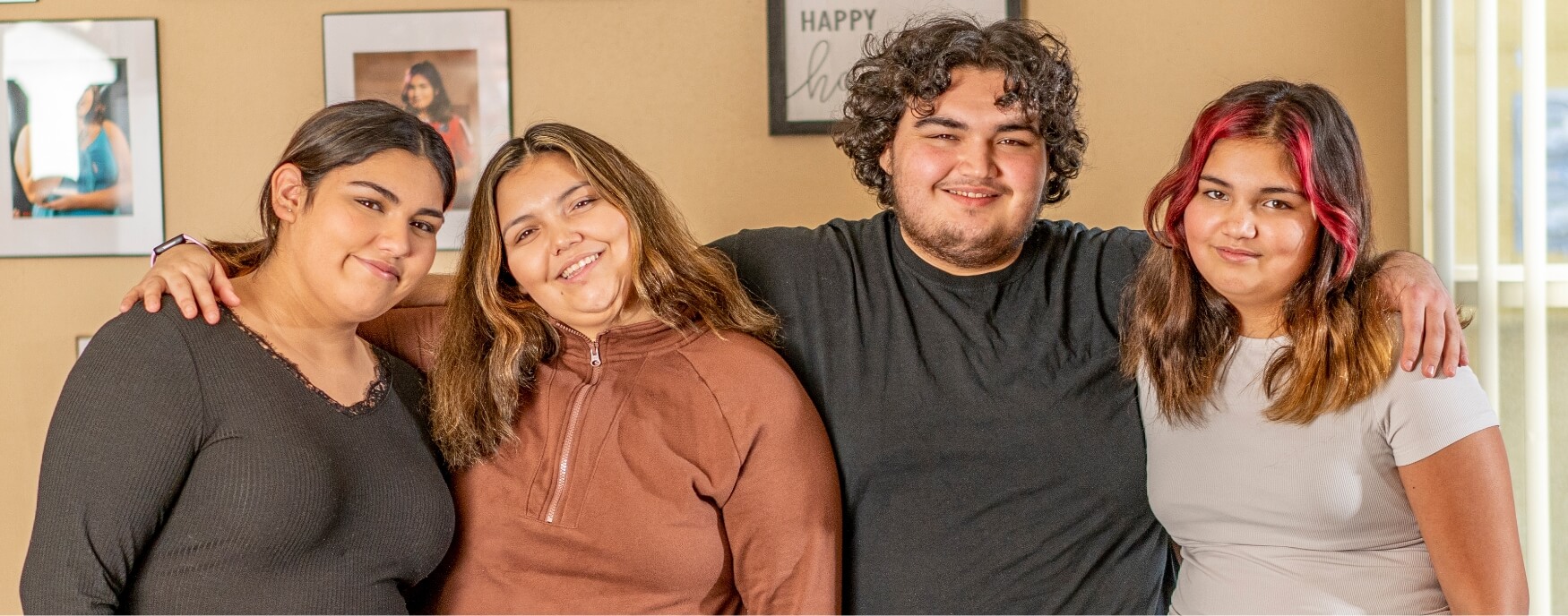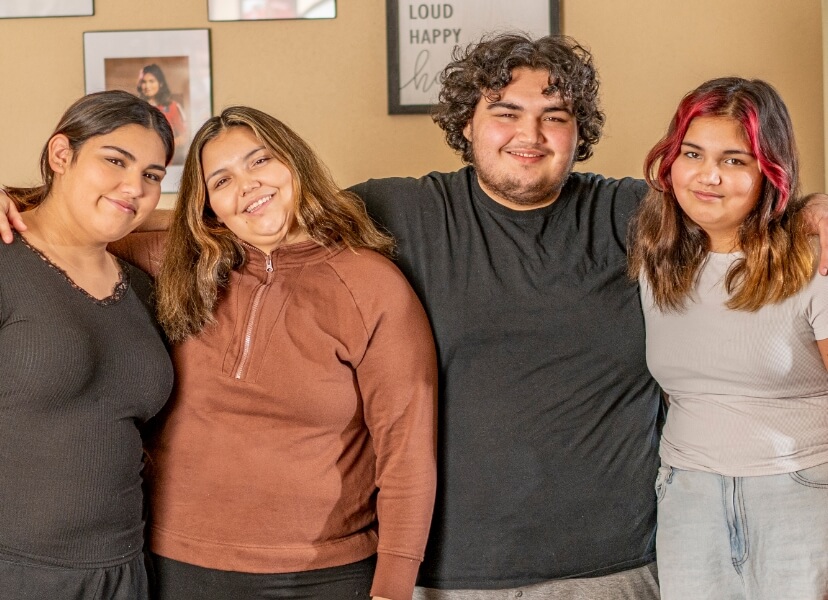‘Tribes have always taken care of their own’
Home
Throughout Washington, Tribes are finding ways to support Native people as we protect ourselves and others against fentanyl.
Tribes are supporting treatment and recovery programs that honor our experiences. They are putting naloxone into hands at powwows, because it saves lives. They are bringing us together to tell our stories and support our relatives.
And many Tribal leaders in Washington are sharing ideas and resources with one another. Maureen Kinley, a member of the Lummi Indian Business Council, says:
Tribes have always taken care of their own. Our ancestors have done it for many, many years. And we want to continue that work and protect our loved ones the best that we can.
The work belongs to everyone. Throughout Washington, we are taking action to protect our people against fentanyl.
Throughout Washington, Tribes are finding ways to support Native people as we protect ourselves and others against fentanyl.
Tribes are supporting treatment and recovery programs that honor our experiences. They are putting naloxone into hands at powwows, because it saves lives. They are bringing us together to tell our stories and support our relatives.
And many Tribal leaders in Washington are sharing ideas and resources with one another. Maureen Kinley, a member of the Lummi Indian Business Council, says:
Tribes have always taken care of their own. Our ancestors have done it for many, many years. And we want to continue that work and protect our loved ones the best that we can.
The work belongs to everyone. Throughout Washington, we are taking action to protect our people against fentanyl.
Fentanyl is an opioid, so it works like heroin or morphine. But it’s much stronger and more addictive.
- Fentanyl is causing many more overdoses and deaths, especially in Native communities.
- Fentanyl is commonly mixed in with heroin, cocaine, meth, and other drugs, or it’s sold just as fentanyl.
- Some people take it intentionally. Others take it unknowingly — because no one can tell by look, taste, or smell whether any drug has fentanyl in it or how much.
A tiny amount can cause overdose or death. Depending on the person, an amount of fentanyl the size of two salt grains can be fatal.
Fentanyl is an opioid, so it works like heroin or morphine. But it’s much stronger and more addictive.
- Fentanyl is causing many more overdoses and deaths, especially in Native communities.
- Fentanyl is commonly mixed in with heroin, cocaine, meth, and other drugs, or it’s sold just as fentanyl.
- Some people take it intentionally. Others take it unknowingly — because no one can tell by look, taste, or smell whether any drug has fentanyl in it or how much.
A tiny amount can cause overdose or death. Depending on the person, an amount of fentanyl the size of two salt grains can be fatal.


So, like our Tribes and leaders, many Native people in Washington are taking action to end overdose.
Neomia Battin and Alisha Athos, of the Kalispel Tribe of Indians, are learning and teaching about our languages and cultures as sources of strength.
Nisqually Indian Tribe member Ken Choke is talking with others, without judgment, about finding drug treatment that aligns with our values and works in our lives.
Robert Coberly, of the Tulalip Tribes, is finding forgiveness and healing in Native-centered treatment.
Tori Denison, a member of the Spokane Tribe of Indians, is talking with others about the unpredictable drug supply.
Spokane Tribe member Dakota Ford is gaining strength from friends and relatives as he faces recovery.
Meera Forespring and their sister Ayasha Forespring, members of the Cowlitz Indian Tribe, are making their own decisions about substance use.
Shaliya Hawkins and her mom Hannah Sibbits, of the Puyallup Tribe of Indians, are learning together that recovery includes boundaries.
Levi Horn, a member of the Northern Cheyenne Tribe, is showing people how to use naloxone to prevent fatal overdoses.
Eva James, of the Muckleshoot Indian Tribe, is lending hope to people living in recovery.
Tamika LaMere, of the Little Shell Tribe of Chippewa Indians, is advocating for honest conversations about opioids with our families, Tribes, and communities — and with our health care providers.
Muckleshoot member Alicia Oliver is getting treatment that works for her, including medication, so she can live in long-term recovery.
Selina Ramirez and her friend Valarie Ogle, of the Port Gamble S’Klallam Tribe, are accepting their own stories and finding acceptance in their community.
Josette Ross is helping Native-centered treatment centers that support all our ways of healing. Josette is a descendent of the Nisqually, Saulteaux and Haudenosaunee Tribes.
Isaac Tonasket, of the Confederated Tribes of the Colville Reservation, is choosing sobriety while embracing culture and family.
Monica Tonasket, of the Spokane Tribe, is working to educate others and prevent addiction from starting.
We are talking with our kids and grandkids, nieces and nephews — not just once, but always. We’re telling our friends and cousins about the realities of this drug that’s infecting our communities. We’re reminding our brothers and sisters that they are strong, and that resilience grows from culture and connection. For our lives, we are taking action.
So, like our Tribes and leaders, many Native people in Washington are taking action to end overdose.
Neomia Battin and Alisha Athos, of the Kalispel Tribe of Indians, are learning and teaching about our languages and cultures as sources of strength.
Nisqually Indian Tribe member Ken Choke is talking with others, without judgment, about finding drug treatment that aligns with our values and works in our lives.
Robert Coberly, of the Tulalip Tribes, is finding forgiveness and healing in Native-centered treatment.
Tori Denison, a member of the Spokane Tribe of Indians, is talking with others about the unpredictable drug supply.
Spokane Tribe member Dakota Ford is gaining strength from friends and relatives as he faces recovery.
Meera Forespring and their sister Ayasha Forespring, members of the Cowlitz Indian Tribe, are making their own decisions about substance use.
Shaliya Hawkins and her mom Hannah Sibbits, of the Puyallup Tribe of Indians, are learning together that recovery includes boundaries.
Levi Horn, a member of the Northern Cheyenne Tribe, is showing people how to use naloxone to prevent fatal overdoses.
Eva James, of the Muckleshoot Indian Tribe, is lending hope to people living in recovery.
Tamika LaMere, of the Little Shell Tribe of Chippewa Indians, is advocating for honest conversations about opioids with our families, Tribes, and communities — and with our health care providers.
Muckleshoot member Alicia Oliver is getting treatment that works for her, including medication, so she can live in long-term recovery.
Selina Ramirez and her friend Valarie Ogle, of the Port Gamble S’Klallam Tribe, are accepting their own stories and finding acceptance in their community.
Josette Ross is helping Native-centered treatment centers that support all our ways of healing. Josette is a descendent of the Nisqually, Saulteaux and Haudenosaunee Tribes.
Isaac Tonasket, of the Confederated Tribes of the Colville Reservation, is choosing sobriety while embracing culture and family.
Monica Tonasket, of the Spokane Tribe, is working to educate others and prevent addiction from starting.
We are talking with our kids and grandkids, nieces and nephews — not just once, but always. We’re telling our friends and cousins about the realities of this drug that’s infecting our communities. We’re reminding our brothers and sisters that they are strong, and that resilience grows from culture and connection. For our lives, we are taking action.
‘There is more in life’
‘There is more in life’
Tori Denison's mother died of a fentanyl overdose and now she is her sisters' legal guardian. She is finding ways to protect them and herself against the powerful opioid. She says:
I want to have a better life. I want my sisters to have the best life they can. They just need a good role model.
Tori was 20 when her mother, Crystal, died. Tori’s mom had already overdosed once.
The first time, Tori found Crystal unresponsive at home. In shock, Tori drove four blocks to reach her neighbors, who grabbed naloxone and came back with her. They used naloxone to reverse Crystal’s overdose and called 911. Crystal survived.
The day Crystal died, in September 2022, she was too far gone by the time Tori found her. But Tori had seen naloxone save her mother’s life before. Her advice is to keep it nearby, whether it’s at home or in your bag.
She also talks with her siblings about fentanyl and addiction. “I give them the advice to not do it,” she says. “They have seen how it happens.”
Tori Denison's mother died of a fentanyl overdose and now she is her sisters' legal guardian. She is finding ways to protect them and herself against the powerful opioid. She says:
I want to have a better life. I want my sisters to have the best life they can. They just need a good role model.
Tori was 20 when her mother, Crystal, died. Tori’s mom had already overdosed once.
The first time, Tori found Crystal unresponsive at home. In shock, Tori drove four blocks to reach her neighbors, who grabbed naloxone and came back with her. They used naloxone to reverse Crystal’s overdose and called 911. Crystal survived.
The day Crystal died, in September 2022, she was too far gone by the time Tori found her. But Tori had seen naloxone save her mother’s life before. Her advice is to keep it nearby, whether it’s at home or in your bag.
She also talks with her siblings about fentanyl and addiction. “I give them the advice to not do it,” she says. “They have seen how it happens.”